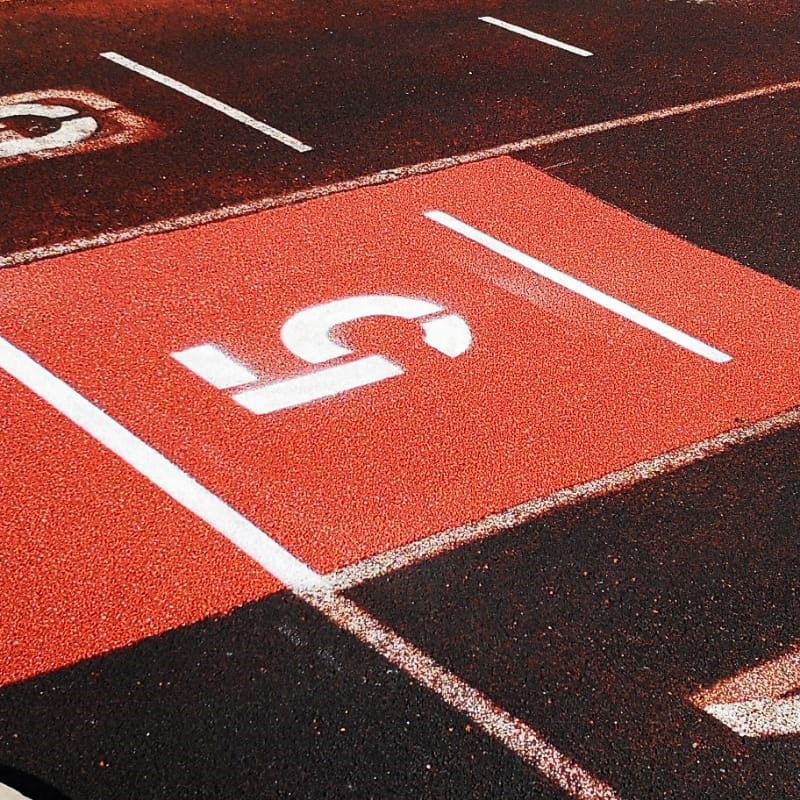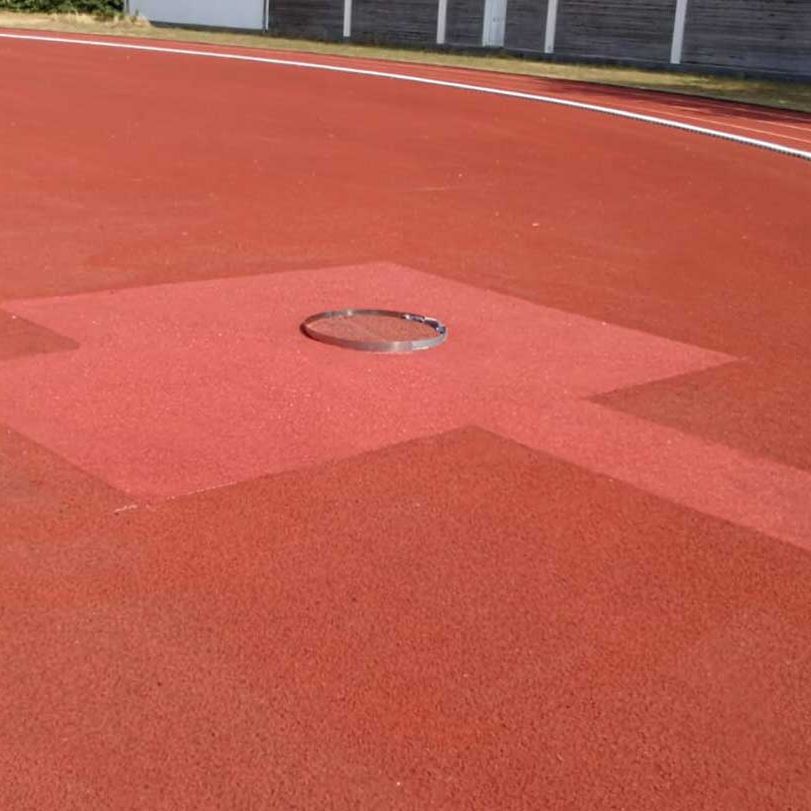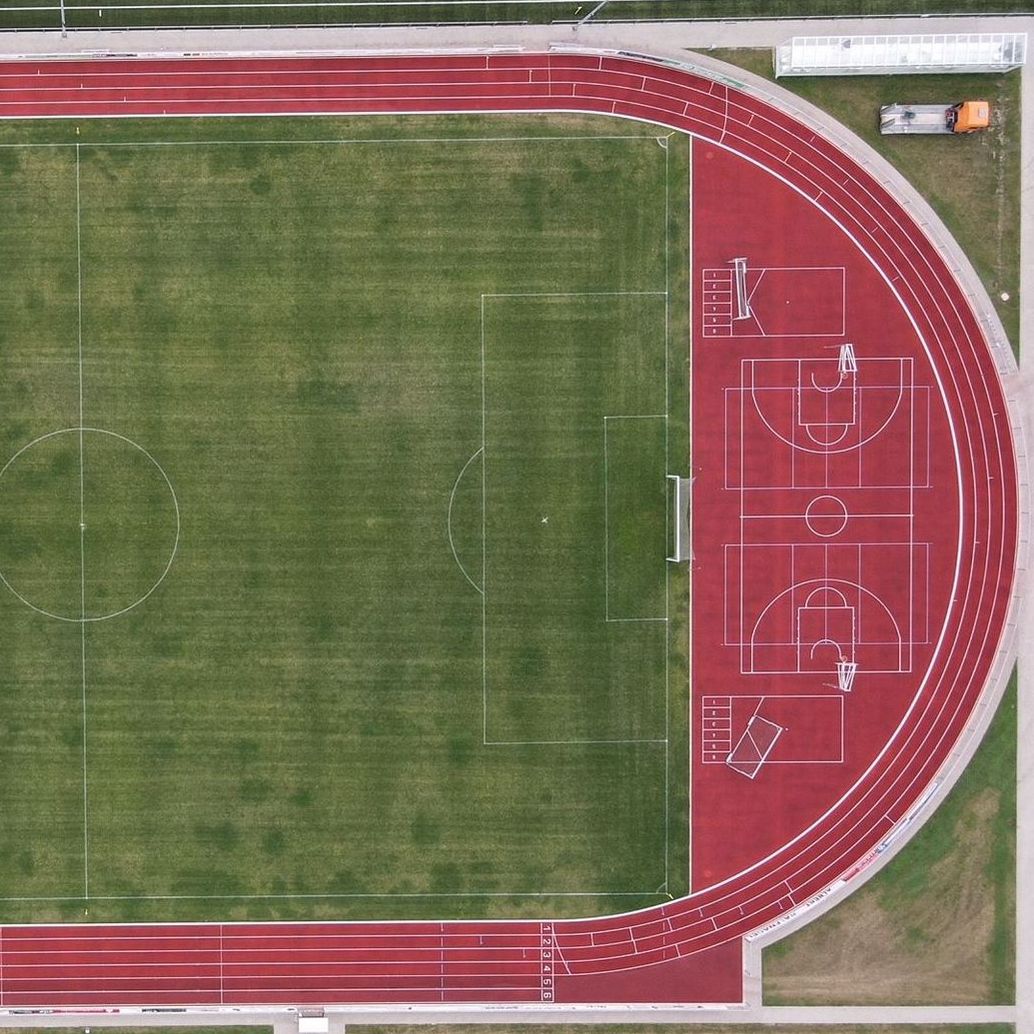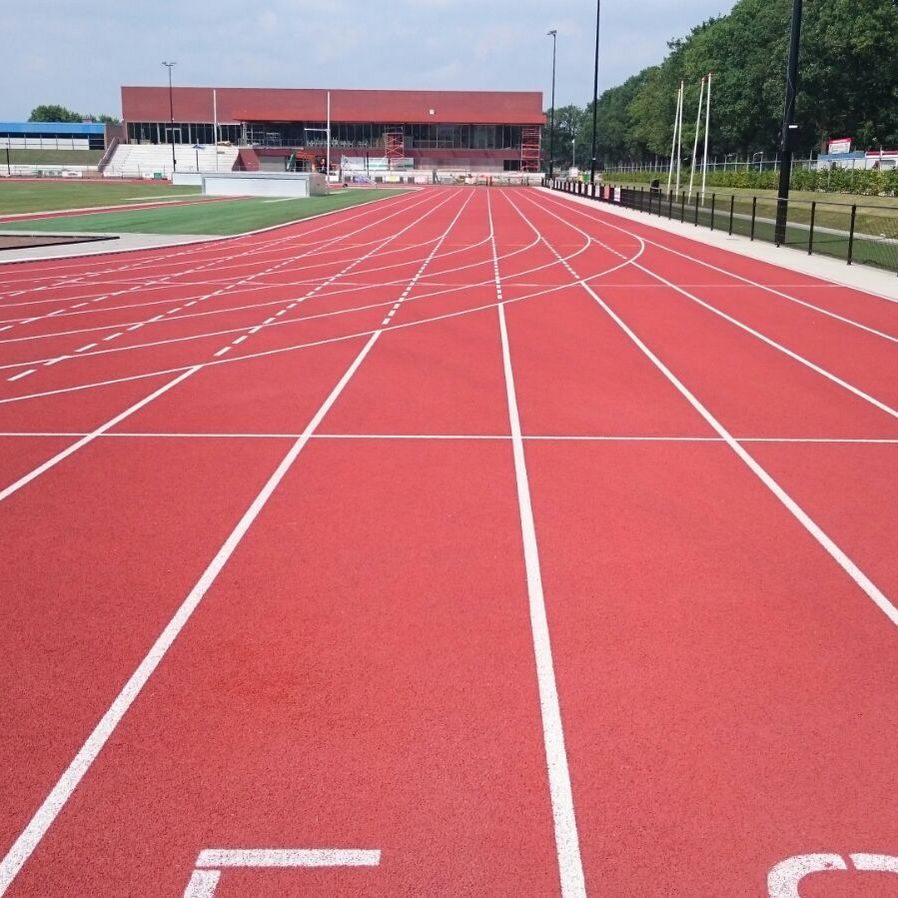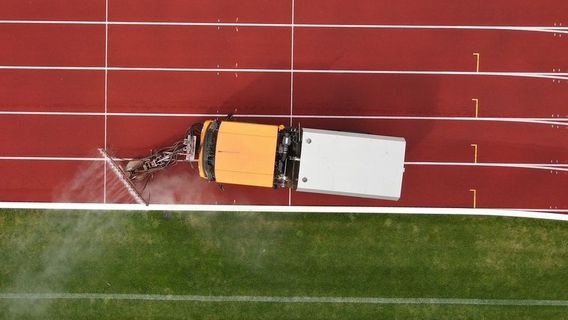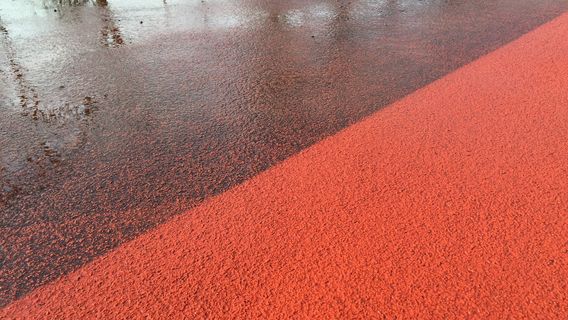Having your Tartan track repaired within due time, ensures many advantages
Repairs within due time do more than just ensure the functionality and attractiveness of your facilities. You are simultaneously investing in maintaining the value of your arena, saving high subsequent costs for making repairs too late and minimising your liability risk as the operating organization.
The same applies for remarking lines. Just like the Tartan track itself, these lines are experience high stress and strain from sporting events and are subject to continuous wear. To maintain the functionality for sports, the lines should be refurbished approximately every five years. Neglecting the time when it is necessary to remark the lines results in the lines becoming unrecognisable for use as aids and reference points for remarking, with subsequent high costs for remeasuring the entire Tartan track.
Repairing fissures and holes in Tartan tracks
The first signs of wear on Tartan tracks are minor fissures or holes in the surface. Quick reaction and proper, professional repair at this point can frequently avert major damage to the Tartan surfacing. Fissures in the Tartan surfacing result from material fatigue as well as from high stress and strain. Sometimes this is also the result of inattentiveness by users or incorrect care of the surface. Foreign particles present continuously on the Tartan track (for example, dirt or sand), make the track porous as well as susceptible to damage requiring repair.
Fissures and small holes can, however, be eliminated very economically. The usual procedure is as follows:
- The damaged Tartan surface is completely cut out and removed.
- The subsurface is cleaned, dried and recoated with an adhesive primer.
- The damaged spot is filled with new EPDM granulate
- The new granulate is dried
After the EPDM granulate has completely cured (EPDM = ethylene-propylene-dien-monomer) the Tartan track is again ready for 100% accident-free use.
Info: Most synthetic surfacings in outdoor areas are laid completely on site (insitu surfacing). EPDM is the most frequently used surfacing material. EPDM together with polyurethane cures to form a resilient surface, which is permanently bonded to the subsurface. In the meantime the surfacing material (granulate) is available in all colours of the rainbow. Tartan track or surfacing is the most common term. However Tartan is actually a product or brand name, similar to “Kleenex” for cosmetic tissue or paper handkerchief, and has come to mean any synthetic surfacing for tracks and playing fields.
Info: Most synthetic surfacings in outdoor areas are laid completely on site (insitu surfacing). EPDM is the most frequently used surfacing material. EPDM together with polyurethane cures to form a resilient surface, which is permanently bonded to the subsurface. In the meantime the surfacing material (granulate) is available in all colours of the rainbow. Tartan track or surfacing is the most common term. However Tartan is actually a product or brand name, similar to “Kleenex” for cosmetic tissue or paper handkerchief, and has come to mean any synthetic surfacing for tracks and playing fields.
Intensive wear to Tartan tracks and continuous porous surfaces or high abrasion
Sooner or later the time will come when it is no longer practical to repair cracks and holes. The time and effort become too great and the repairs no longer provide satisfactory results. In such cases it is necessary to consider so-called re-topping for the Tartan track. This means that the old existing system can remain in place after minor repairs and serve as the subsurface for a new spayed coating. This is a more economical alternative than complete replacement.
Complete replacement requires removal of the entire synthetic surfacing, usually down to the asphalt layer. Then the new layers are applied one by one. As the final step the surface is strewn with EPDM granulate. This final layer then forms the resilient, non-slip surface on the track. It is absolutely essential to ensure that the material does not have any gaps and is perfectly flat. Such work should always be accomplished by a specialised company. Finally proper, professional installation ensures that the Tartan track exhibits optimal characteristics over the entire surface and provides a long service life.
Line markings on Tartan tracks
Naturally there are specifications for official competitions, which must be fulfilled by the markings and lines on tracks and other Tartan surfaces (for example approach tracks for high jump). Correct and easily visible markings for safety and orientation are important not only in competitions.
Unrecognisable markings on tracks can lead to runners colliding and avoidable accidents. The organisation operating the track or promoting the event may even be liable. Particularly on tracks, easily visible, non-slip lines are essential to prevent possible injuries.
Use of Tartan tracks and playing fields inevitably results in wear to the lines. Varying weather conditions increase the wear and quickly make the lines indistinguishable. This requires immediate action to remark the lines.
Lines can be remarked at any time. It is most practical to remark lines after intensive cleaning.


